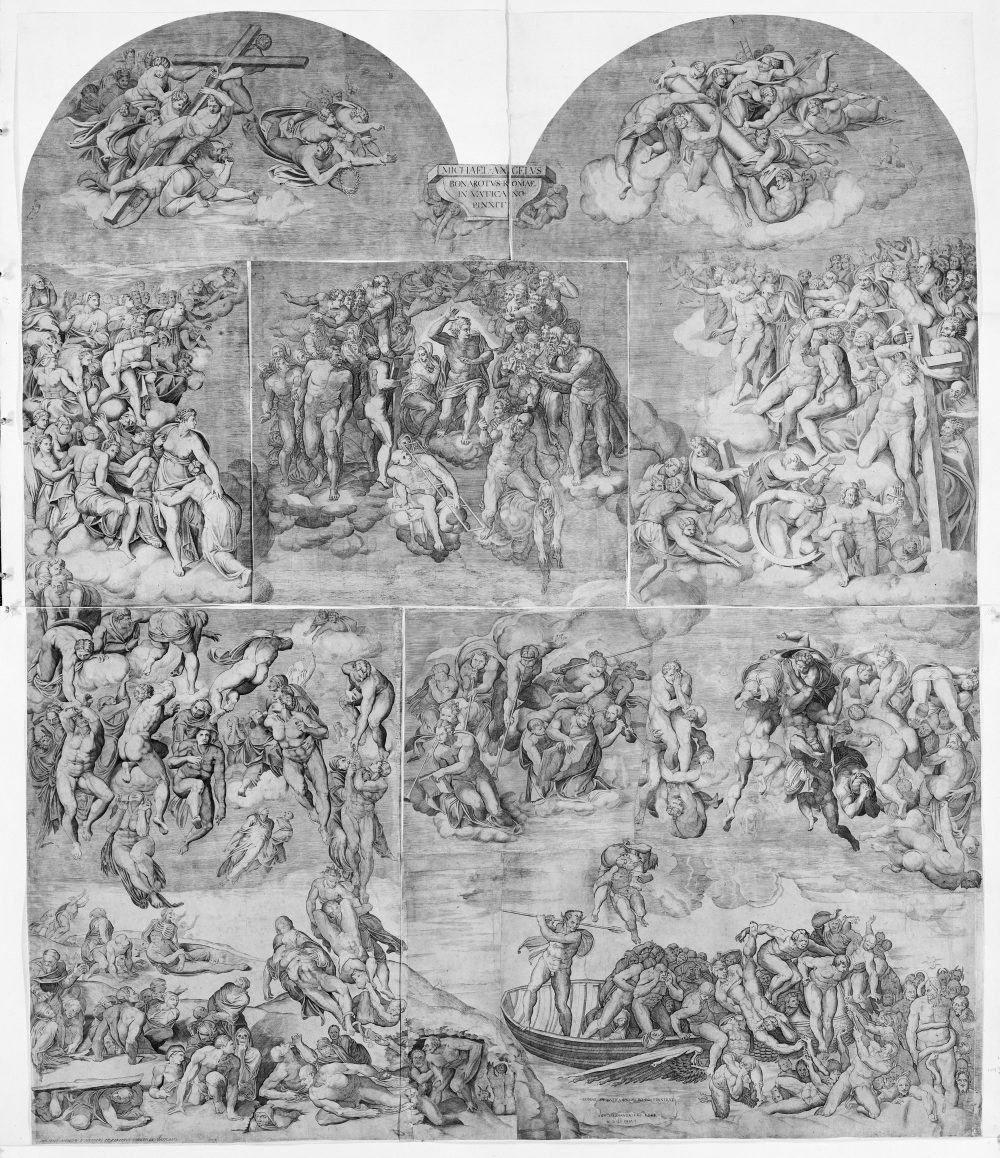
Metropolitan Museum of Art, New York, www.metmuseum.org
In this part of the dialogue, the characters once again talk about the freedom of painting. M. Ruggiero reaffirms the argumentation that painting has to imitate nature and not the other way round.
In addition, he addresses another invention of the artist in the “Last Judgement”, namely that some of the resurrected souls do not yet seem to be awake and in their right minds. The character attributes this error to the fact that Michelangelo was more interested in demonstrating his skills than in depicting the truth of history.
“M. Troilo said: ‘Well, I think you’re splitting hairs. Painting too needs its own decorum and freedom in many things’.
M. Ruggiero replied: ‘It shall have both, when art gives way to nature and imitates it, as it must, in everything; and when fiction gives way to truth, and shadow to light. And any painter who behaves differently seems to me like the tailor who makes a pair of trousers for a man who has one leg shorter or fatter than the other, and makes both legs the same and, if the customer complaints, he replies: «I know how to make trousers, not legs», As if the legs should be designed to fit trousers, rather than trousers the legs. Another personal invention [capriccio] that I should mention is (Michelangelo) having painted man who do not look wide awake and do not seem to know yet where divine justice orders them to go. However, in no way can this be what happens, if that was his pretext from making them like that. Because those who have died, whether shortly before or much earlier, must know what God’s decision is, since they know the place where there souls have been. If this was in paradise or in purgatory, then they are certain of being saved; if it was hell, then they know they are damned. Also, the resurrection, as I told you earlier, will happen so fast that they will not have a chance to think about what they will do, let alone do it. Therefore, I regard this fable [favola]’.
M. Francesco said: ‘It could be that this was only done to warn us, to show us the different fates of men, since strange things happen at times in the course of life. It may have been done so did everyone may more readily think about these things’.
M. Ruggiero replied: ‘It is one thing to die, but quite another to rise again from the dead. What you say does not form part of the mystery of the resurrection, for the reason I have told you. This it’s why the artist must always do his utmost, in every way he can, to show the truth, so that anything he has left out can be excused on the grounds that it could not be represented, not that he did not wish to show it or did not understand it. I certainly believe that Michelangelo, as was stated earlier and is indeed public knowledge, nor did err through ignorance but rather because he wished to embellish his brush and safety of the art (of painting) rather than the truth. I am certain that he would have gained more approval and been more admired if he had painted this mystery as history demanded, rather than as he has shown it’.”
“Disse M. Troilo: ‘Oh, voi la volete troppo sottilizzare. Bisogna che anco la pittura abbia in molte cose il suo decoro e la sua libertà’.
Rispose M. Ruggiero: ‘Allora l’uno e l’altra arà, che l’arte cederà a la natura e l’imitarà, come far deve, in ogni cosa; e quando la finzione cederà al vero e l’ombra a la luce. E colui che fa il contrario mi par che faccia come quel sartore, che fa un paio di calze ad uno che abbia una gamba più lunga o più grossa de l’altra, e le faccia ambedue ad un modo, e dica poi, si egli si lamenta: «Io so fare le calze e non le gambe»; come più tosto le gambe a le calze, che le calze a le gambe accomodare si convenisse. Un altro capriccio anco io noto, ne l’aver fatti quelli che non paiono ben desti e non par che sappino ancora dove la divina giustizia gli chiami. Conciossia che questo non può essere in verun modo, se con questo pretesto gli ha così fatti; conciossia che coloro che sono stati morti o poco o molto, è necessario che sappino la determinazione di Dio, sapendo il luogo ove le loro anime sono state. Se in paradiso o in purgatorio, sono certi d’esser salvi; se ne l’inferno, dannati. Inoltre la resurrezzione, come dianzi vi dissi, sarà tanto presta, che non aranno agio a pensar quel’atto, non che a farlo. Sì che io la tengo favola’.
Disse M. Francesco: ‘Potrebbe esser che ciò fatto fusse per avvertimento nostro, solo per mostrarci la varia fortuna degli uomini, che nel praticare il mondo strani casi a le volte succede loro. Acciò ognuno possa più facilmente considerarli fu così fatta’.
Rispose M. Ruggiero: ‘Altra cosa è il resuscitare, altra il morire. Quello che voi dite non appartiene a questo mistero, per quello che io v’ho detto. E per questo l’artefice si deve sempre sforzare in ogni miglior modo che possibil sia mostrare il vero, acciò sia scusato aver lasciato quello che mostrare non ha possuto, più tosto che non l’aver voluto o non l’avere inteso. Credo certo che Michelagnolo, come da prima fu detto et è fama publica, che per ignoranza non ha errato, ma più tosto ha voluto abbellire il pennello e compiacere a l’arte che al vero. Io penso certo che più sarebbe piaciuto et ammirato, se questo mistero fatto avesse come l’istoria richiedeva, che come l’ha fatto’.”
Gilio 2018, 172-173, n.251-252, fig. 19-22



